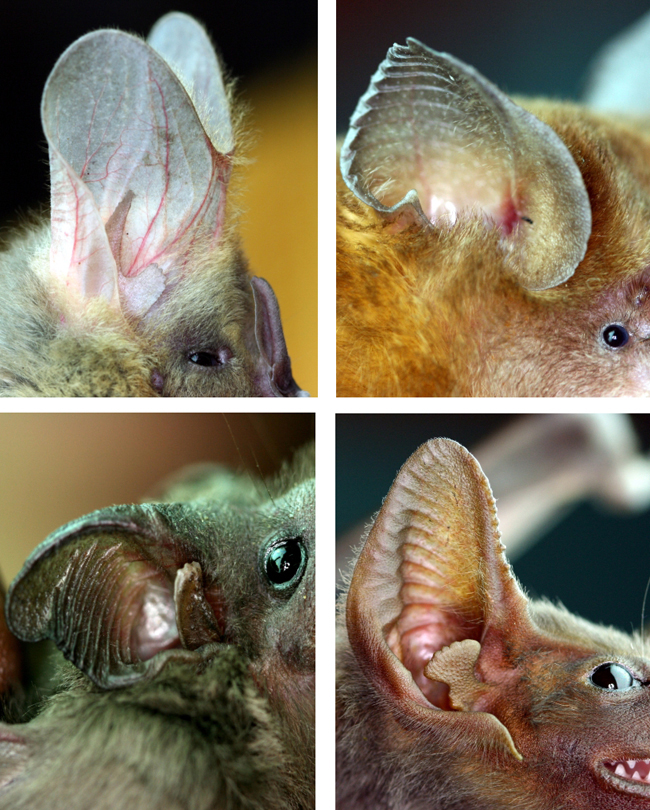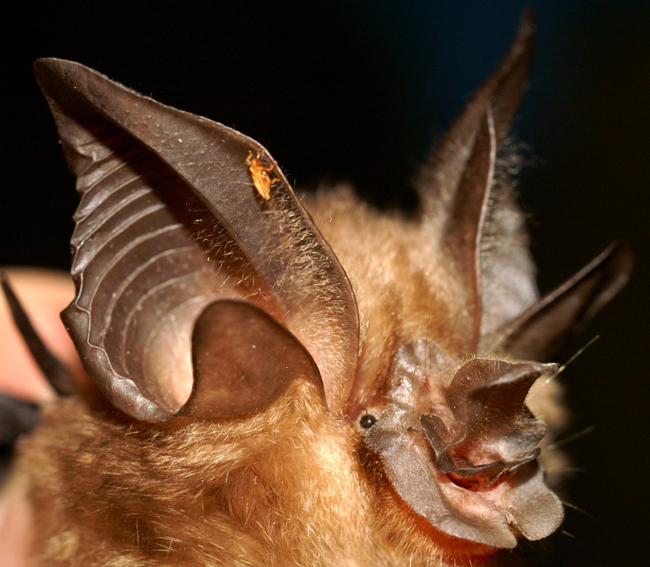
Have you ever heard the expression that someone is “as blind as a bat”? Well this expression is not entirely accurate as no species of bats are actually blind; having said this, bats do have horrible eyesight, forcing them to rely on a different way to get around and navigate obstacles. More specifically, bats use SONAR (SOund Navigation And Ranging) in order to navigate the skies. SONAR is essentially exactly what it sounds like; that is, it consists of the use of sound waves to both navigate and to determine the range (distance) to something. As we have discussed before here on Team UV, SONAR consists of both passive and active SONAR, with the former being simply listening to the sound emitted from an object in the environment and the latter being the emitting of sound and then listening for the return echos. Well, as it turns out, bats are kings of both worlds because of the intricate design of their ears and noses.
Bats & Passive SONAR
As seen in the photos above, different species of bats have different configurations of ears in order to navigate the different types of environments that they inhabit, but there are some key features of the ears that are common across almost all bats: grooves, ridges, flaps, and other kinds of ear baffles. All of these features allow the bats to effectively filter out or attenuate some signals while selecting and encoding other signals to make them more easily understandable. All of this is accomplished by the refraction of the signals on the basis of how the sound waves physically interact with the geometry of the ear or by the resonance introduced within the ear due to how the various features of the ear affect the vibrations introduced by the sound wave-ear interaction. In essence these bats are able to reject or suppress all of the irrelevant information stored in the way of sound waves, while selectively highlighting all of the relevant information that they require to be able to acrobatically maneuver through their environment with ease. But wait, there’s more! Bats can actively adjust their ear configuration by deforming their ears in order to constantly change how they filter information and what information they filter. To take this a step further, bats can do this up to ten times per second, or about three times faster than a human can blink their eyes, allowing these bats to adapt at far less than a moment’s notice!

Bats & Active SONAR
Everything discussed so far has focused on passive SONAR abilities, but bats also excel with activeSONAR. Why is this the case? Because not only can they deform their ears, they can also deform their noseleaves (leaf-like flaps on their noses) to produce a highly focused SONAR beam and to alter the properties of that beam. This translates to the bats being capable of being selective both on the emitting and receiving ends, making them extremely efficient at utilizing their SONAR (not to mention the fact that bats are capable of using far fewer SONAR pulses/beams to navigate than man-made SONAR devices due to this increased efficiency). When you combine this with the fact that they manage to pack all of these biosonar capabilities into such a small package, it is no wonder engineers are studying them to come up with smaller, less power-hungry, more cost-effective, and more efficient SONAR.
To sum up the merits of adapting this biosonar for man-made devices, I will quote Rolf Mueller, the mechanical engineer behind this research:
“The split-second decisions that bats on the wing have to make will often be based only on a very small number of echoes. Based on these few input signals, the bat’s brain is able to make the quick and reliable decisions that swift flight in confined spaces requires,”
You can find more info on this research here: Bat’s biosonar inspires sensing technology research
So there you have it, just another example of how biomimicry or biomimetics is helping to greatly advance the state of science and technology.
Note: This post originally appeared on our old website (TeamUV.org).

